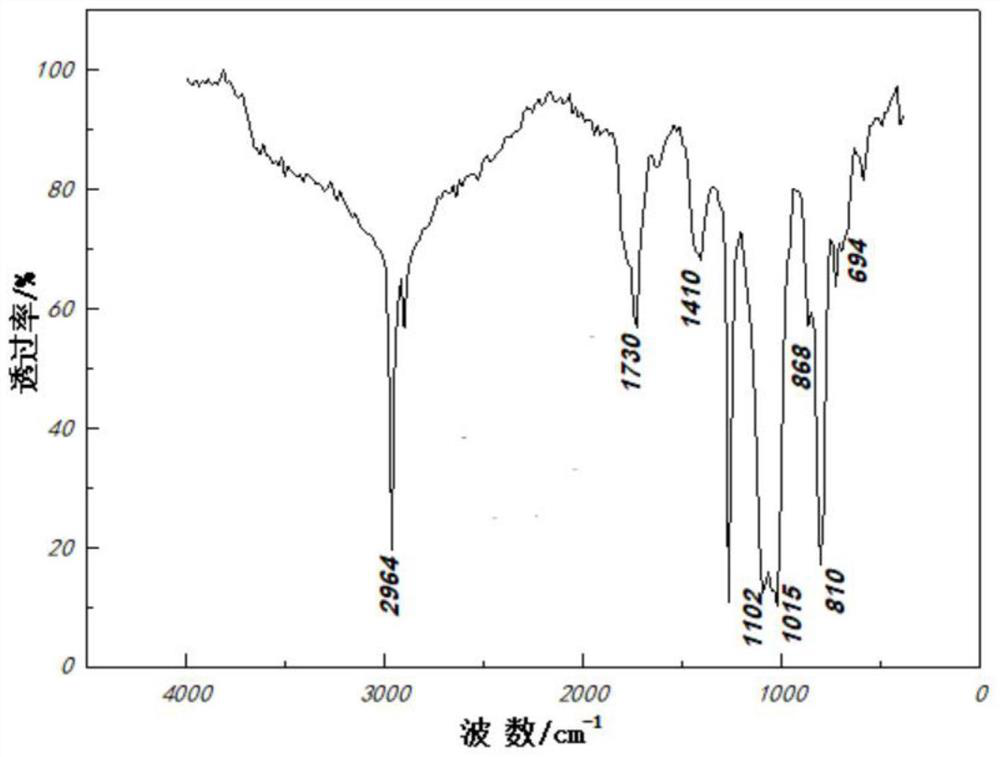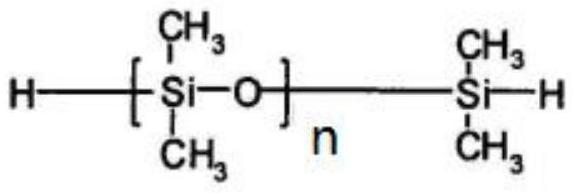Solid-liquid separation process for fluorescent whitening slurry wastewater
A technology for solid-liquid separation and whitening slurry, which is applied in the field of solid-liquid separation of fluorescent whitening slurry wastewater, can solve the problems of difficult treatment of emulsified oil wastewater, effective treatment methods and high treatment costs, and achieves reduction in post-treatment. Burden, simplified post-processing, reduced COD effect
- Summary
- Abstract
- Description
- Claims
- Application Information
AI Technical Summary
Problems solved by technology
Method used
Image
Examples
Embodiment 1
[0032] A solid-liquid separation process for fluorescent whitening slurry wastewater, the operation steps are:
[0033] First, pump 800g of fluorescent whitening slurry wastewater into the heating reactor and heat to 70°C. After heating and stirring for 1h, add hydrochloric acid to adjust the pH to pH8, add 1.2g of demulsifier, then add 0.05g of coagulant, and heat to 80°C. ℃, heated and stirred for 30 minutes, and then placed in a centrifuge for solid / liquid separation after treatment. The clarified liquid is filtered through sand and then filtered through activated carbon adsorption.
[0034] The mass fraction of the hydrochloric acid is 10%.
[0035] The added demulsifier is compounded by PAC and PAM, and its synthetic ratio is 30:1.
[0036] The preparation method of described coagulation aid is:
[0037] 17g of diallyldimethylammonium chloride, 2.2g of castor oil maleate, and 0.02g of aluminum acrylate are added to the reaction kettle, and high-purity nitrogen protecti...
Embodiment 2
[0040] A solid-liquid separation process for fluorescent whitening slurry wastewater, the operation steps are:
[0041] First, pump 800g of fluorescent whitening slurry wastewater into the heating reactor and heat to 75°C. After heating and stirring for 1 hour, add hydrochloric acid to adjust the pH to pH8, add 2g of demulsifier, then add 0.15g of coagulant aid, and heat to 80°C , heated and stirred for 30 minutes, and then placed in a centrifuge for solid / liquid separation after treatment. The clarified liquid is filtered through sand and then filtered through activated carbon adsorption.
[0042] The mass fraction of the hydrochloric acid is 12%.
[0043] The added demulsifier is compounded by PAC and PAM, and its synthetic ratio is 20:1.
[0044] The preparation method of described coagulation aid is:
[0045] 20g of diallyldimethylammonium chloride, 3g of castor oil maleate, and 0.1g of aluminum acrylate are added to the reaction kettle, and high-purity nitrogen protect...
Embodiment 3
[0049] A solid-liquid separation process for fluorescent whitening slurry wastewater, the operation steps are:
[0050] First, pump 800g of fluorescent whitening slurry wastewater into the heating reactor and heat to 75°C. After heating and stirring for 1h, add hydrochloric acid to adjust the pH to pH8, add 2.4g of demulsifier, then add 0.2g of coagulant, and heat to 80 ℃, heated and stirred for 30 minutes, and then placed in a centrifuge for solid / liquid separation after treatment. The clarified liquid is filtered through sand and then filtered through activated carbon adsorption.
[0051] The mass fraction of the hydrochloric acid is 14%.
[0052] The added demulsifier is compounded by PAC and PAM, and its synthetic ratio is 15:1.
[0053] The preparation method of described coagulation aid is:
[0054] 22g of diallyldimethylammonium chloride, 3.5g of castor oil maleate, and 0.2g of aluminum acrylate are added to the reaction kettle, and high-purity nitrogen protection is...
PUM
 Login to View More
Login to View More Abstract
Description
Claims
Application Information
 Login to View More
Login to View More - R&D
- Intellectual Property
- Life Sciences
- Materials
- Tech Scout
- Unparalleled Data Quality
- Higher Quality Content
- 60% Fewer Hallucinations
Browse by: Latest US Patents, China's latest patents, Technical Efficacy Thesaurus, Application Domain, Technology Topic, Popular Technical Reports.
© 2025 PatSnap. All rights reserved.Legal|Privacy policy|Modern Slavery Act Transparency Statement|Sitemap|About US| Contact US: help@patsnap.com



